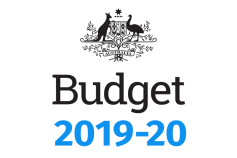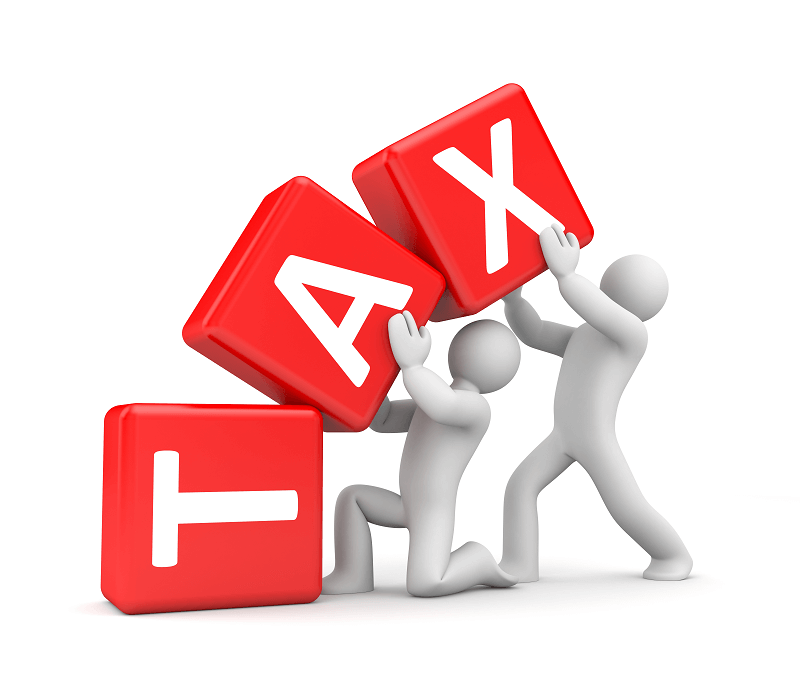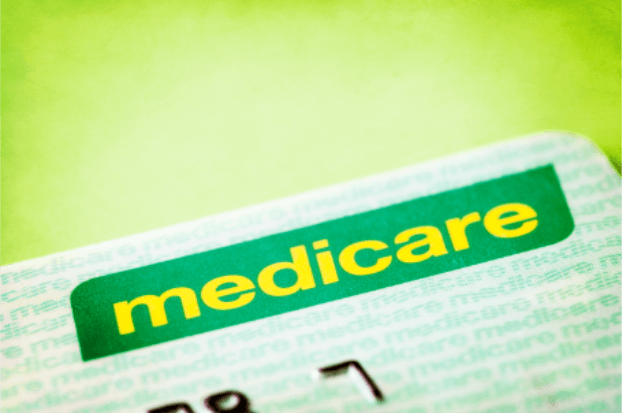The 2019-20 Federal Budget Overview
The 2019/20 Federal Budget was released by the Treasurer Josh Frydenberg on April 2, 2019. This pre-election budget detailed some significant tax measures including:
- An increase in the immediate asset write-off to $30,000 for businesses with turnover of less than $50m per annum;
- A six-year staged reduction in the marginal tax rate from 32.5% to more closely align with the corporate tax rate, which is hoped to stimulate consumer spending.
Government focus on business tax compliance also continues, with the Tax Office compliance programs receiving a funding boost of $1 billion. It is indisputable that those businesses rorting the system should be brought to account, however, increased ATO scrutiny of compliant small businesses will be disruptive and costly.

PERSONAL INCOME TAX
The Government has announced measures that seek to build on previously legislated changes to reduce personal income tax over the next six years.
Low and Middle Income Tax Offset (LMITO)
With immediate effect for the 2019 income year, the Government has proposed to increase the non-refundable low and middle-income tax offset (LMITO) to a maximum amount of $1,080 (up from $530) for taxpayers earning more than $48,000 but no more than $90,000. The LMITO then phases out from $90,001 to $126,000. The base amount of the LMITO is also proposed to increase from $200 to $255 for those earning no more than $48,000. This offset is in addition to the existing low-income tax offset (LITO) and is a temporary measure due to be removed on 30 June 2022.
Tax Rate Changes
With effect from 1 July 2022, the Government proposes to increase the top threshold of the 19% tax bracket from the previously legislated $41,000 to $45,000 and will also increase the LITO from the previously legislated amount of $645 to $700. These changes are intended to lock in the reduction in tax provided by the LMITO, once the LMITO is removed.
The Government has already legislated to remove the 37% tax bracket with effect from 1 July 2024. In this Budget, it announced a further change to reduce the 32.5% marginal tax rate to 30%, which will take effect at the same time. This means that taxpayers earning up to $200,000 will pay a maximum marginal tax rate of 30% from the 2025 income year. For that year, taxpayers will be able to earn fully franked dividends of approximately $158,000 without paying any top-up tax (assuming a franking rate of 30%) and approximately $90,000 (assuming a franking rate of 25%).
Tax Rates and Thresholds for 2018/19 Onwards
The table below summarises the announced personal tax rate and threshold changes (excluding the 2% Medicare levy).
| Tax Rates & Thresholds | |||
| Tax Rate |
2018/19 Year |
2022/23 Year |
2024/25 Year |
| 0% |
$0 - $18,200 |
$0 - $18,200 |
$0 - $18,200 |
| 19% |
$18,201 - $37,000 |
$18,201 - $45,000 |
$18,201 - $45,000 |
| 30% |
Not Applicable |
Not Applicable |
$45,001 - $200,000 |
| 32.5% |
$37,001 – $90,000 |
$45,001 – $120,000 |
Not Applicable |
| 37% |
$90,001 – $180,000 |
$120,001 – $180,000 |
Not Applicable |
| 45% |
$180,001+ |
$180,001+ |
$200,001+ |
| LITO |
Up to $445 |
Up to $700 |
Up to $700 |
| LMITO |
Up to $1,080 |
|
|
Medicare levy low-income thresholds for 2018/19

For the 2018/19 income year, the Medicare levy low-income threshold for singles will be increased to $22,398 (up from $21,980 in 2017/18). For couples with no children, the family income threshold will be increased to $37,794 (up from $37,089 in 2017/18). For each dependent child or student, the family income threshold will increase by $3,471 (up from $3,406 in 2017/18).
For single seniors and pensioners eligible for the seniors and pensioners tax offset, the Medicare levy low-income threshold will be increased to $35,418 (up from $34,758 in 2017/18). The family threshold for seniors and pensioners will be increased to $49,304 (up from $48,385), plus $3,471 for each dependent child or student.
SMALL & MEDIUM BUSINESS TAX
Instant Asset Write-Off
The Government has announced an expansion of the instant asset write-off threshold from $25,000 to $30,000, with medium-sized businesses (with a turnover of up to $50m) now also qualifying.
Following the Government’s announcement on 29 January 2019 to increase the instant asset write-off threshold from $20,000 to $25,000 and extend the eligible purchase period to 30 June 2020, this Budget announcement increases the threshold even further to apply to assets costing less than $30,000, while retaining the 30 June 2020 deadline.
While the deduction measure was previously limited to small businesses (being those businesses with an aggregated annual turnover of less than $10 million), it will extend to “medium-sized business” with an aggregated annual turnover of less than $50 million. This means all businesses with an aggregated turnover of less than $50 million will be able to obtain an immediate deduction for eligible assets costing less than $30,000 that are first used, or installed ready-for-use, from Budget night to 30 June 2020.
We note that the instant asset write-off for medium-sized businesses will only apply to assets that were acquired after 2 April 2019 and will not apply to assets acquired before this date (even where they are first used or installed ready for use after Budget night).
Given the announcements made on 29 January 2019, there are effectively three different thresholds that will apply for purchases made during the 2019 financial year. In summary, the immediate deduction will be available in respect of assets that cost:
| Cost of Asset & Purchase Date |
Eligible Businesses |
|
Up to $20,000, purchased from 1 July 2018 to 28 January 2019 |
Small Business |
|
Up to $25,000, purchased from 29 January 2019 to 2 April 2019 |
Small Business |
|
Up to $30,000, purchased from 2 April 2019 to 30 June 2020 |
Small & Medium |
The Budget announcement makes it clear that the existing small business tax depreciation concessions, including the pooling rules, will continue to apply to those businesses with aggregated turnover of less than $10 million and will not be extended to medium-sized businesses. More information on this topic is in our 2019 Tax Planning Guide.
Export Market Development Grant (EMDG)

The Government announced that it will provide additional funding of $60 million to the EMDG scheme over a three-year period to support small and medium enterprises that export Australian goods and services to overseas markets.
The EMDG is currently available to Australian exporters who have income of less than $50 million and who promote their products to international customers. The objective of the EMDG is to reimburse eligible entities up to 50% of their promotional expenses (i.e. advertising, marketing, overseas travel to trade shows) incurred above $15,000. The minimum grant entitlement is $5,000 and the maximum is $150,000 per annum.
SUPERANNUATION
The Government has again announced superannuation changes in this year’s Budget, which are aimed at increasing contribution opportunities for individuals aged between the ages of 65 and 74.
.jpg)
Work Test Exemption for Individuals Aged 65 and 66
The Government has stated that from 1 July 2020, individuals aged 65 and 66 will be permitted to make voluntary superannuation contributions without satisfying the work-test requirement. Currently, contributions by those aged 65 and over are subject to a work-test that requires the person to have worked a minimum of 40 hours in a consecutive 30-day period during the financial year.
In addition to the work-test exemption, the Government has stated it would also permit ‘bring-forward’ contributions for individuals aged 65 and 66. The ability to bring forward contributions is not currently available once an individual has reached age 65. On a practical level, the measure would extend access to bring-forward contributions for an additional two years of an individual’s life. Bring-forward contributions allow individuals to use three years of non-concessional contributions in any one year – i.e. non-concessional contributions of up to $300,000 could be made in one financial year, significantly boosting superannuation fund assets available for investment.
INDIRECT TAX
Increased Luxury Car Tax Refunds
Farmers and tourism operators who use luxury vehicles in their business are currently able to access refunds of up to $3,000 of the luxury car tax (LCT) paid. From 1 July 2019, the LCT refund limit will be increased to $10,000.
ABN integrity measures

The Budget also proposed measures to counter the black economy through more stringent (annual) ABN eligibility rules. From 1 July 2021, ABN holders with an income tax return obligation will need to lodge their income tax return to retain their ABN. From 1 July 2022, ABN holders will also need to confirm the accuracy of their details on the ABR register on an annual basis.
These changes will enact some of the measures recommended by the Black Economy Taskforce, which identified widespread abuse of ABNs. The change will also impose an additional compliance burden on businesses to ensure the currency of the ABN of their suppliers. Where a supplier’s ABN is cancelled, a payer could find themselves with a no-ABN withholding obligation.
This article forms part of our Business Accelerator Magazine. Download the latest edition HERE or browse other articles from this edition below:
- The Importance of Local Search Marketing
- End of Year Tax Planning
- Buyer Beware - Before You Buy a Business
- Thinking of Renovating Your Investment Property?
- ATO Expects to Visit 1800 Businesses in Black Economy Blitz
- Back to Top














